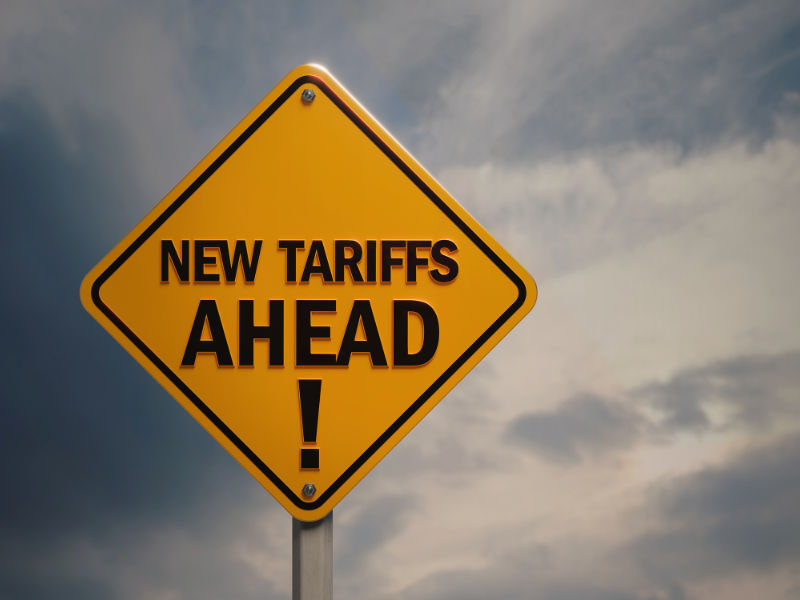For small businesses, rising tariffs aren’t just a policy change—they’re a direct hit to profitability, supply chains, and long-term growth. With uncertainty around tariff increases, global trade policies, and supply chain disruptions, small business owners are left strategizing on how to absorb rising costs, stay competitive, and protect their bottom line.
In this uncertain landscape, proactive financial management and cost optimization are essential. Whether you’re a startup or an established company, understanding the impact of tariffs and implementing smart financial strategies can help safeguard your business. Here’s what you need to know—and how to stay ahead.
The Immediate Impact of Tariffs on Small Businesses
1. Increased Costs & Shrinking Margins
Many small businesses source raw materials, parts, or finished products from international suppliers. Tariffs on imported goods lead to higher costs, which directly reduce profit margins.
Example: A Pennsylvania-based bridal shop owner who placed dress orders months ago now has to absorb newly imposed tariffs on shipments arriving later, cutting deeply into expected profits.
2. Pricing Pressures & Customer Pushback
Raising prices to offset tariffs seems like a natural solution, but customers don’t always accept sudden cost increases—especially in highly competitive markets.
Example: A Wyoming-grown metal fabrication business is struggling to pass rising steel and aluminum costs onto customers, who are already facing inflationary pressures and wage increases.
3. Supply Chain Disruptions
Tariffs don’t just increase costs; they also disrupt supply chains. Delays at ports, reciprocal tariffs from other countries, and shifts in trade policies create unpredictability in sourcing materials and fulfilling orders.
Example: A safety equipment manufacturer, based in Burlington, is concerned that reciprocal tariffs will drive overseas customers to buy from local competitors, reducing global sales opportunities.
4. Slower Growth & Hiring Freezes
With increased costs and uncertain cash flow, many small businesses are putting expansion, hiring, and investments on hold. The financial strain makes it difficult to reinvest in operations or talent.
Example: A Ohio-based manufacturer importing steel for welding electrodes is considering cutting hiring plans due to tariff-driven cost increases.
What Can Small Businesses Do to Offset Tariff Impacts?
1. Strengthen Financial & Cash Flow Management
Navigating tariff-related cost increases requires tight financial oversight and strategic cash flow planning. Consider:
- Expense optimization – Identify non-essential spending to free up cash.
- Supplier negotiations – Work with vendors to secure better pricing or extended payment terms.
- Dynamic pricing strategies – Adjust pricing models to absorb costs without shocking customers.
Working with fractional CFO and accounting services can provide financial insights, cost-cutting strategies, and better forecasting models to navigate rising costs.
2. Diversify Suppliers & Optimize Sourcing
Reducing dependency on tariff-affected suppliers can mitigate pricing volatility and supply chain disruptions.
- Explore domestic sourcing options – Some local suppliers may offer more predictable pricing and faster delivery.
- Identify alternative global markets – Countries outside of high-tariff regions could provide more competitive sourcing options.
- Build buffer inventory – If feasible, stockpile essential materials before further tariff increases take effect.
3. Automate & Improve Operational Efficiency
With rising costs, operational inefficiencies become even more costly. Automating financial processes, inventory management, and expense tracking can help businesses save money and make informed decisions faster.
- Implement AI-driven accounting tools – Reduce manual errors and improve real-time financial insights.
- Streamline workforce management – Use automated HR and payroll solutions to optimize labor costs.
- Adopt finance automation platforms – Tools like Ramp help businesses control expenses and track spending in real time.
Leveraging COO and financial consulting services can help identify cost-saving opportunities, streamline operations, and improve resilience.
4. Strategically Adjust Pricing & Customer Communication
- Introduce gradual price increases – Raising prices incrementally can help customers adjust rather than causing immediate pushback.
- Offer value-added services – Enhancing customer experience, service guarantees, or bundled offerings can justify pricing adjustments.
- Be transparent – Customers are more understanding of price changes when they know the reason behind them.
5. Monitor Trade Policy & Plan for the Future
Tariffs and trade policies are constantly shifting, and staying informed can help businesses anticipate future risks and opportunities.
- Follow trade policy updates – Staying informed allows businesses to react proactively rather than reactively.
- Work with financial advisors – Professional CFO and accounting services can help model different scenarios and prepare for market changes.
- Develop contingency plans – Preparing for multiple financial outcomes allows for faster pivots when policies change.
Stay Agile, Stay Resilient
Tariffs are a major challenge for small businesses, but proactive financial management, smart sourcing, and operational efficiency can help mitigate the impact. Whether it’s optimizing cash flow, renegotiating supplier contracts, or leveraging automation, having the right strategy in place ensures businesses can adapt and stay competitive.
Need expert financial guidance to brace for rising tariffs? Ravix Group has been a trusted partner for businesses for over 30 years, offering accounting, bookkeeping, outsourced HR, and C-suite advisory services. Schedule a consultation today to build a strategy that keeps your business strong—no matter what the economy throws your way.

